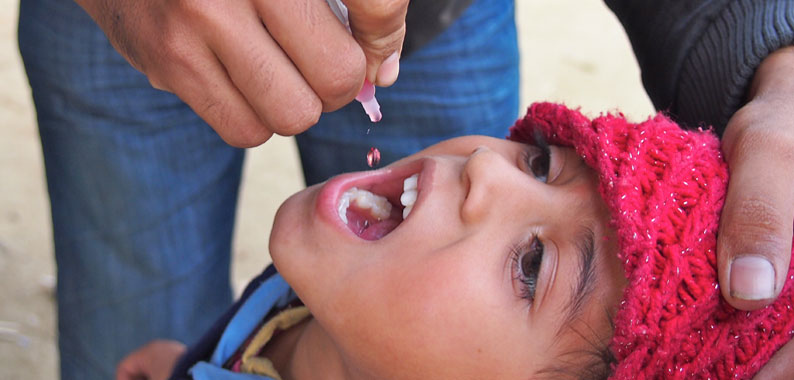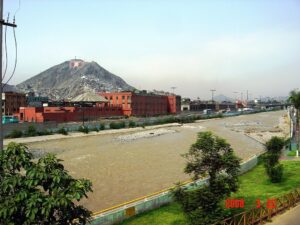Poliomyelitis is a “highly contagious viral infection that can lead to paralysis, respiratory problems, and even death caused by the poliovirus.”1 The virus is highly contagious and specific to humans. The first outbreak of polio in the United States occurred in 1894 with more than 132 reported cases. The number of infected people throughout the United States increased rapidly after the first epidemic with thousands being affected every year after the first onset.2 Thousands of people in the United States were affected by the virus before Dr. Jonas Salk found the vaccine for Poliomyelitis.
Dr. Jonas Salk was born on October 28, 1914, just as World War I was beginning, and four years before the great influenza pandemic of 1918-1919. In 1916 influenza and polio began killing children and the elderly in large numbers.3 Salk’s brilliance could be seen at a young age. When he began school at the age of five, he was very eager to learn, and was able to skip ahead a few grades. Salk described his early years as “the life of an only child, having full attention of a doting, controlling mother who wanted to be sure that her child is protected and will grow up to be a worthwhile person.”4 Salk’s mother could not have done a better job. Dr. Jonas Salk began conducting research on viruses in the 1930s as a student at New York University. After graduating from New York University, Salk attended the University of Michigan. At the University of Michigan, Dr. Salk began working on a flu vaccine, for which he is now known as one of the key contributors to the development of the flu vaccine during World War II. By the 1950s, he was awarded a grant to “study the polio virus and develop a possible vaccine.”5 Dr. Salk had devised a version of the polio vaccine immediately after obtaining the grant. He began clinical trials in which he “was to kill several strains of the virus and then inject the benign viruses into a healthy person’s bloodstream.” 6 This was attempted at first by various other scientists before it was perfected by Dr. Salk. This was successful because the person’s immune system in which it was injected would soon begin to form antibodies towards the virus, which would help in resistance with future exposure to polio.
Before the vaccine was developed and made widely available to the public, many researchers developed alternative ways to help control the symptoms of polio. Sister Kenny, an Australian nurse, came to the United States to promote a treatment she had developed specifically for polio. This treatment consisted of the use of warm compresses to relax contracting muscles. Another invention was that of the “iron lung,” which was developed to aid in respiration. Some of the main symptoms of polio are swallowing and respiratory difficulties, so the “iron lung” was developed to help alleviate some of the respiratory problems people with polio were experiencing.7

On March 26, 1953, Dr. Salk was able to announce his findings on the polio vaccine. The news was quickly published in articles and newspapers and announced on the radio. In 1954, clinical trials began testing on approximately two million American schoolchildren. It was not until April of 1955 that it was announced that the vaccine was indeed effective and could be manufactured. It took about two years for the vaccine to become widely available throughout the United States. Within the first year that the polio vaccine became available the number of cases per year decreased dramatically. Polio, along with many other viral diseases, has no cure. The vaccine that was manufactured was intended to prevent others from contracting the virus. With polio, prevention is the key. Albert Sabin, a Polish-American researcher, was able to facilitate the distribution of the vaccine by developing an oral vaccine.8
For the current year 2016, only about seventy cases of poliomyelitis have been reported, and only two countries remain polio-endemic.9 About 90-95% of the reported cases are asymptomatic, meaning no symptoms are present. This has been made possible because of Dr. Salk and all of the researchers that put their time and effort into discovering the vaccine to prevent poliomyelitis.
- Bernard Seytre and Mary M. Shaffer, “Coming Along at the Right Time: Jonas Salk,” in The Death of a Disease : A History of the Eradication of Poliomyelitis (New Brunswick: Rutgers University Press, 2005), 44. ↵
- Scott S. Smith, “Jonas Salk Stood Tall With His Polio Vaccine Rescue: The Chemist Came through in Paralysis Battle,” Investor’s Business Daily, July 17, 2015. ↵
- Scott S Smith, “Jonas Salk Stood Tall With His Polio Vaccine Rescue: The Chemist Came through in Paralysis Battle,” Investor’s Business Daily, July 17, 2015. ↵
- Charlotte DeCroes Jacobs, Jonas Salk: A Life, 1st edition (Oxford ; New York: Oxford University Press, 2015), 36. ↵
- Scott S. Smith, “Jonas Salk Stood Tall With His Polio Vaccine Rescue: The Chemist Came through in Paralysis Battle,” Investor’s Business Daily, July 17, 2015. ↵
- Salem Press Biographical Encyclopedia, 2015, s.v. “Jonas Salk,” by Elof Axel Carlson. ↵
- Charlotte DeCroes Jacobs, Jonas Salk: A Life, 1st edition (Oxford ; New York: Oxford University Press, 2015), 45. ↵
- Salem Press Biographical Encyclopedia, 2015, s.v. “Jonas Salk,” by Elof Axel Carlson. ↵
- Seytre and Shaffer, “Coming Along at the Right Time: Jonas Salk,” in The Death of a Disease : A History of the Eradication of Poliomyelitis, 44. ↵



65 comments
Noah Bolhuis
It is amazing to read about these brilliant minds of the 20th century and their ability to discover new things. The polio vaccine was one of the most impact discoveries of that century, and has perhaps saved the lives of millions of people throughout the world. It is also equally as important of a discovery because there is no known cure for polio, so the only treatment is prevention, for example the vaccine. Lastly, I am very impressed with the rate at which Dr. Salk was able to get the grant to the official manufacturing of the vaccine.
Cynthia Rodriguez
This is a great article and I am glad you chose to acknowledge Dr. Jonas Salk and his contribution to the medical world. This article showcased his dedication and perseverance, and I think it is awesome that his eagerness to learn paid off. As this article pointed out, other professionals had come up with ways to help alleviate the pain associated with the symptoms of polio, but the best way to deal with polio is to prevent it. Dr. Jonas Salk was able to develop something that did just that. I thought this article was on the shorter side, but still descriptive and enlightening.
Jabnel Ibarra
The work of Dr. Jonas Salk is largely understated. His research led to the development of vaccines, indirectly saving the lives of millions globally. This shift in focus from cure to prevention was revolutionary in medicine and needs to be talked about more often.
Jocelyn Moreno
Wow, I believe more people should know about the good Dr. Jonas Salk did for millions of people. I love the great detail you put in your article. You gave great background information about him and what lead him to develop the polio vaccine. I learned so much about the whole process to develop the vaccine and learned that their is no cure which I find so shocking. It can only prevent, not cure.
Enrique Segovia
Marvelous article. The life and work of Dr. Jonas Salk is not worldly recognized as much as it should be. Thanks to this article now I know the wonders that Dr. Salk developed, and the countless lives that he saved. Ever since he was a small child, he was a child prodigy, and he demonstrated his potential that would later change the world. As a college student, he started working on his research to find a cure for polio; however, this article taught me that there is no cure for polio, and that actually, polio is to be eradicated through prevention, not because of an available cure. Essentially, Dr. Salk saved millions of lives by developing a prevention vaccine for polio, and thanks to his discovery, the world is close to obliterating polio and become a healthier place to live.
Anna Guaderrama
Nice article. I remember growing, being in class or even registering for classes and always hearing about polio. To be honest, I never really understood what polio was to its full extent but I knew it was a disease and I knew we needed to get vaccinations for it so we wouldn’t have another resurgent outbreak. It’s amazing how much science really impact the daily lives of all of us. If it were not for Dr. Salk, we would not be where we are today.
Tyler Sleeter
Great article. I remember growing up listening to my grandparents talk about their classmates that were hurt by polio, one cousin even had to live in the iron lung for years. These stories scared me so much, I always wanted my vaccinations while my little brother had to be held down every time. To me this article only serves a reminder of important it is to make sure that all children, and even adults, get their vaccinations as required or recommended. Because of the hard work of Dr. Salk, very few children get polio these days with the disease almost eradicated.
Maria Mancha
I knew Polio was a disease, but thats all I really knew. I never knew the background or could even remember the amount of outbreaks. What I think I found most interesting about the article was that he was only about 49 when he discovered the cure. The article didnt include his age, but I did the math. Thats fascinating that this man achieved so much in such a short amount of lifetime. It was fascinating to learn the history about Polio and the man that found the cure to it. Therefore it was a great article and I really enjoyed it.
Kimberly Simmons
The polio virus was one that was not only dangerous, but deadly. It is amazing how one man found a cure to such an invasive disease. One does not always realize the impact of their work, and his most definitely was out of bounds. Salk did more than just save lives – he healed the world. Very interesting and captivating article, well done!
Hector Garcia
It is interesting to read about how Jonas Salk became a doctor and was able to find a vaccine for poliomyelitis. Poliomyelitis is an enterovirus that affected many American families. Dying was as part of the disease, but the most brutal part was what it left behind. This disease would leave children permanently disabled all the way to their deaths. Luckily, thanks to the vaccine this fear soon went away. In the United States, people were now able to live normal lives. But across the global, some remote villages are still being affected by the polio virus and it us up to us to stop. After much thinking, I though that this article was well-researched, but it was also captivating to see the story the man who found the vaccine for polio.